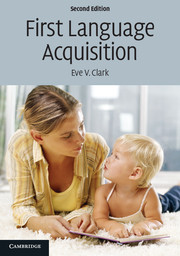Book contents
- Frontmatter
- Contents
- List of tables, boxes, and figures
- Acknowledgements
- 1 Acquiring language: Issues and questions
- Part I Getting started
- 2 In conversation with children
- 3 Starting on language: Perception
- 4 Early words
- 5 Sounds in words: Production
- 6 Words and meanings
- Part II Constructions and meanings
- Part III Using language
- Part IV Process in acquisition
- Glossary
- References
- Name index
- Subject index
6 - Words and meanings
from Part I - Getting started
- Frontmatter
- Contents
- List of tables, boxes, and figures
- Acknowledgements
- 1 Acquiring language: Issues and questions
- Part I Getting started
- 2 In conversation with children
- 3 Starting on language: Perception
- 4 Early words
- 5 Sounds in words: Production
- 6 Words and meanings
- Part II Constructions and meanings
- Part III Using language
- Part IV Process in acquisition
- Glossary
- References
- Name index
- Subject index
Summary
In Words and Things, Roger Brown (1958b:194) described what he called “the original word game.” His account went as follows:
The tutor names things in accordance with the semantic customs of the community. The player forms hypotheses about the categorical nature of the things named. He tests his hypotheses by trying to name new things correctly. The tutor compares the player's utterances with his own anticipations of such utterances and, in this way, checks the accuracy of fit between his own categories and those of the player. He improves the fit by correction.
He noted further that “[w]e play this game as long as we continue to extend our vocabularies and that may be as long as we live.” In this account, Brown recognized the essentially social nature of the exchanges between tutor and player. Effectively, tutors are the adult experts, and the players the children learning language. Adults offer both words and information about word meanings, and children try out their hypotheses about word meanings in their own uses of the words, with adults offering corrections when needed. These exchanges take place in the everyday conversations between children and adults (Clark 1999).
- Type
- Chapter
- Information
- First Language Acquisition , pp. 122 - 148Publisher: Cambridge University PressPrint publication year: 2009



